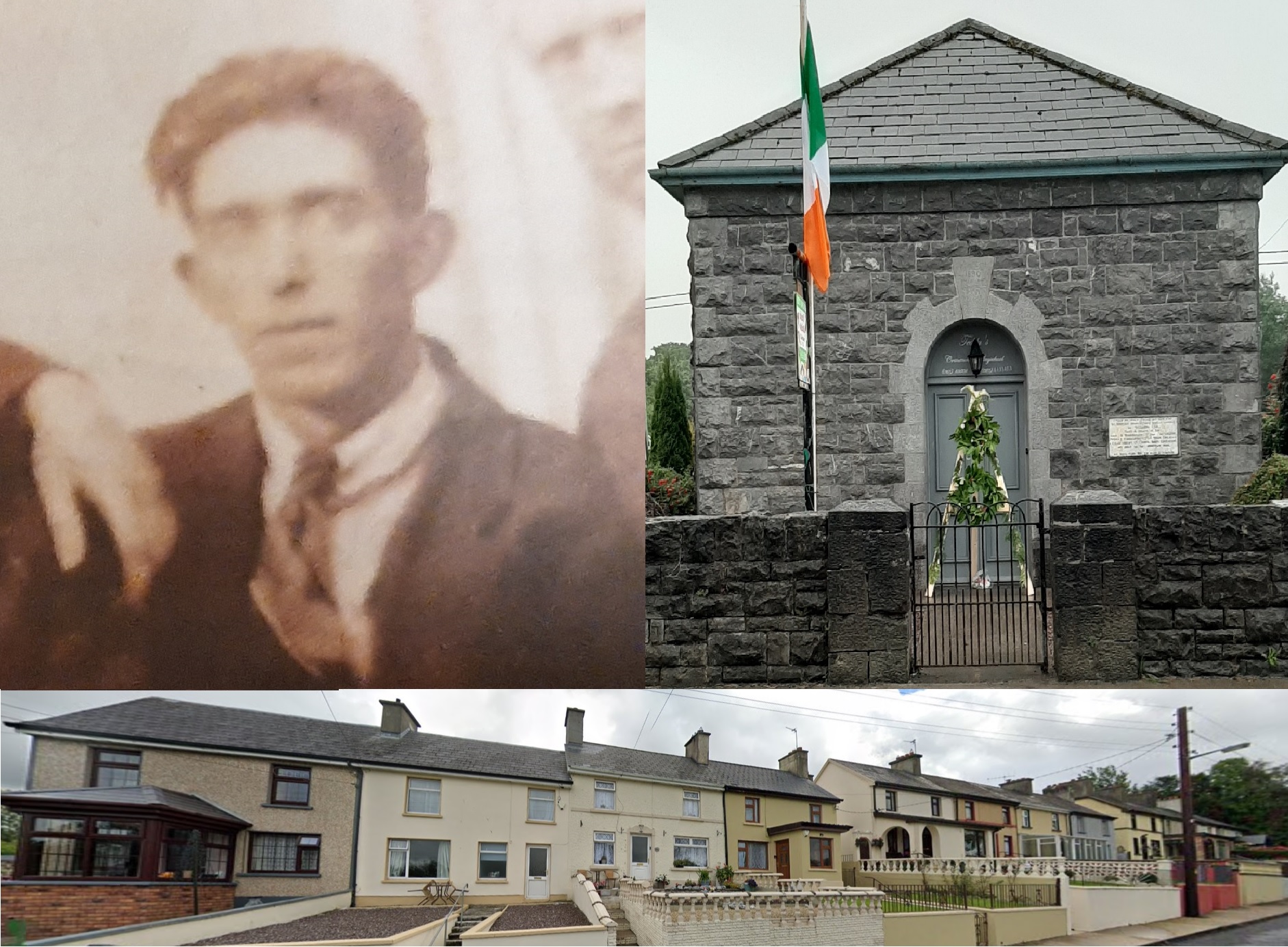
12 - Buckley Terrace
The first development of modern housing to be built in Dromcollogher by the state that Paddy Buckley gave his life to help create, was named in his honour. Buckley Terrace is an impressive development of twelve two-storey houses on the Tullylease Road, in Dromcollogher.

Paddy Buckley, the Courthouse where he died, and Buckley Terrace, Dromcollogher.
West Limerick Brigade Committee of the Irish Volunteers certified the Record of Operations of the Dromcollogher Company – “A” Company, Third Battalion. Twenty five separate activities were listed for the period beginning after the founding of the unit in November 1913, essentially by Fr Tom Wall. The last activity related to support for the anti-treaty troops retreating from Limerick, through Dromcollogher, into Co Cork. Item No.5 in the list of operations relates to the summer of 1918 and is described as follows:
- In 1918
- the Co. raided for arms.
- Had a clash with the R.I.C. at Dromcollogher on the 30th June 1918 day of Aeriocht.
- Volunteers were sent to Waterford, Pallas, etc. for election activities.
- Carried out boycott on a man for taking up a post in the Post Office from a Volunteer of the Coy.
The following is a list of some of the Coy. who took part in these activities:- Benjamin O’Sullivan; Timothy O’Shea; Michael Sheehy; William O’Sullivan; Maurice Kiely; William McCarthy; Patrick Stokes; John Farrell; Patrick Buckley; Timothy O’Dwyer; Timothy Collins; Garrett O’Dwyer; Michael O’Connell; John Hartnett.
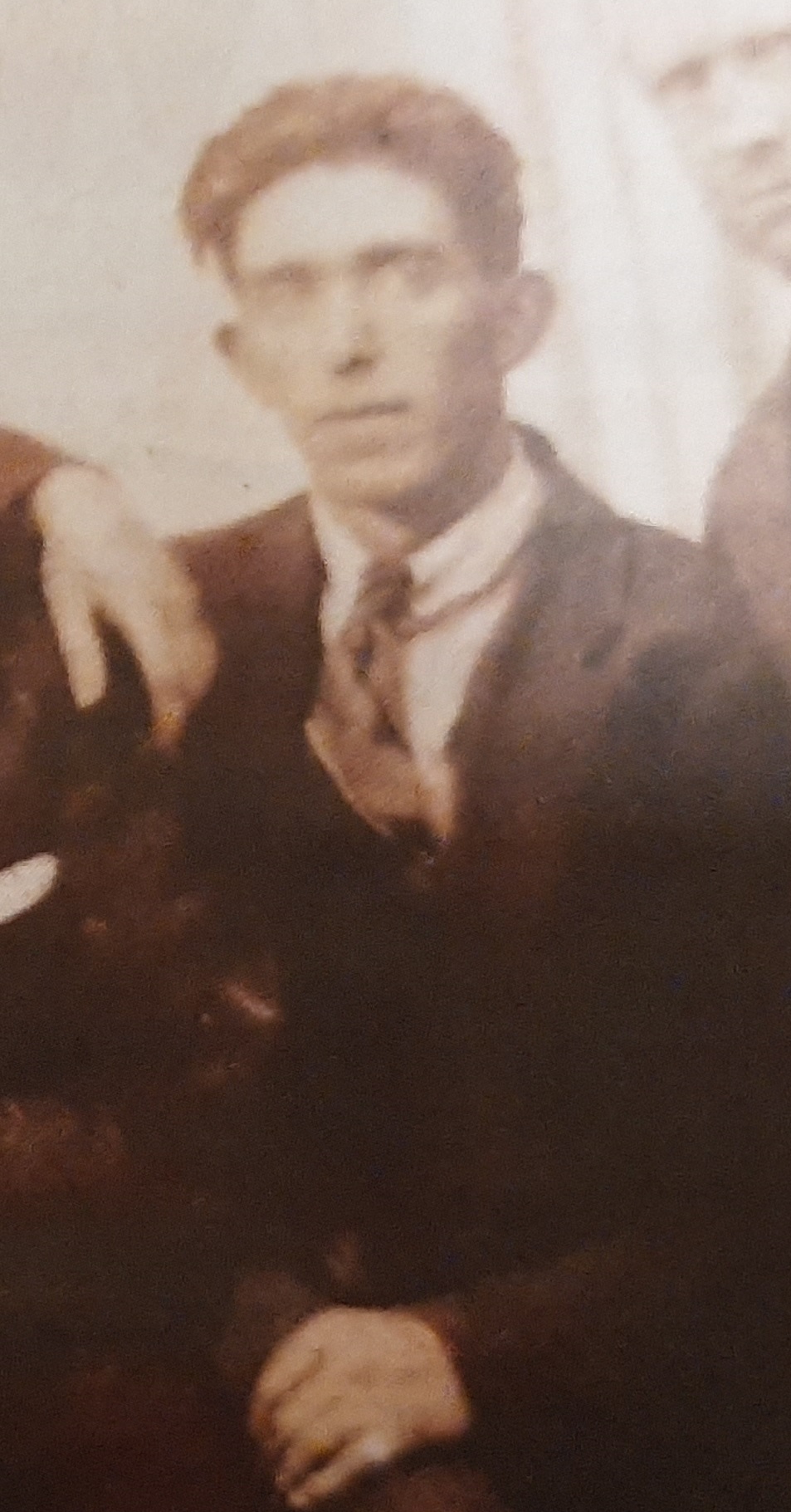
Patrick Buckley, in whose honour, Buckley Terrace in Dromcollogher is named.
The second item listed, the clash with police on the day of the Aeríocht, refers to the incidents that took place on the day of the Annual Feis that was held in Noonan’s Field (under the arch) in Dromcollogher. At the start of the competitions, the Broadford Fiddle and Drum Band marched up Church St and were met with a baton charge by police under the command of an impetuous and excitable District Inspector called Mr Widgeon. During the Feis, the police sought military assistance and fifty fully armed soldiers from Newcastle West arrived and deployed outside the bank. In defiance, at the end of the day’s proceedings at the Aeríocht, the Piper Band and their supporters marched from the field and around The Square. The army didn’t intervene but in front of the Post Office, the police drew baton and wielded them freely. Sticks, stones and fist cuffs were returned and finally the combatants disengaged. A few weeks later, in the dawn hours of July 31st the R.I.C. swooped and arrested Tim O’Shea, Pat Buckley, Bob Costello, and Daniel Galvin. Mick Sheehy in Church Street evaded arrest and went on the run. Those arrested were taken to Adare Court and charged with riotous behaviour, assault on police, marching in formation, etc. They were remanded to a future court at which Daniel Galvin was acquitted. O’Shea, Buckley, and Costello were found guilty and sentenced to six months imprisonment which they served in Belfast Gaol.
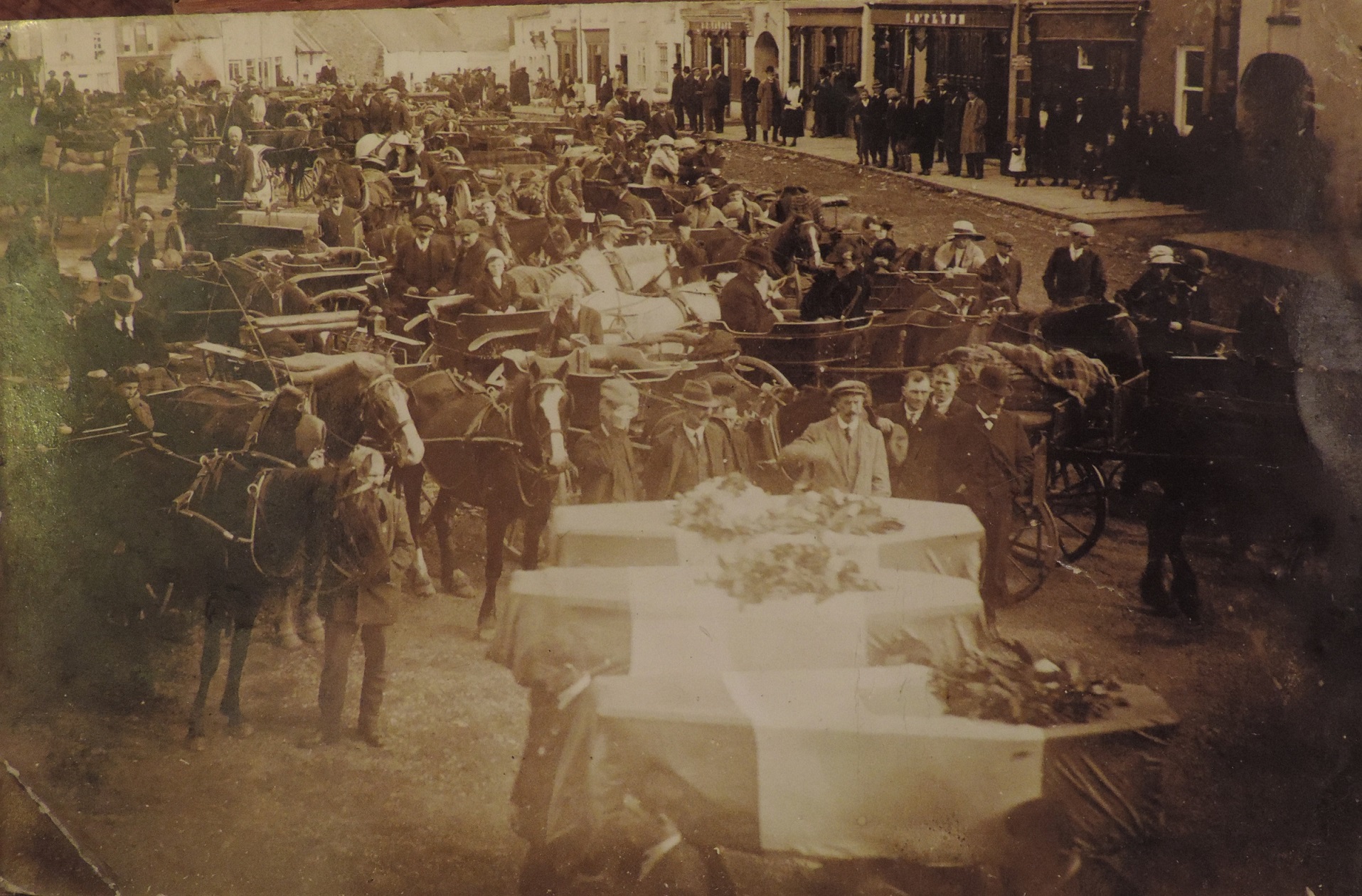
The reinterment ceremony for Paddy Buckley and his comrades David Brennan and Liam Danaher, all of whom died at the Burning of Dromcollogher Courthouse in 1920.
For Patrick Buckley, this prison sentence had a marked bearing on his future engagement with the movement. He was a man of great principle and one of the last young men to change allegiance from the Redmondite policy, to Sinn Fein. Tragically, a couple of short years afterwards, in an action at Dromcollogher Courthouse, Patrick Buckley lost his life. Officially, his comrades recorded that “Sec. Com. Paddy Buckley of Dromcollogher joined the Volunteers at an early age with 'A' Coy of the local Battalion. He took part in all activities of his Company and gave his young life in the burning of Dromcollogher Courthouse on 20 June 1920.”`

The Courthouse in Dromcollogher where the young Patrick Buckley lost his life in 1920.
Danny O’Callaghan thought that it was ironic perhaps that he met his death in such a manner as the burning of unoccupied buildings never appealed to him and he would have preferred more direct encounters with enemy forces. Danny also said that on the day after the incident, he and his friends went to the burnt out courthouse and view the charred remains of Pat Buckley. Danny was greatly saddened particularly as he had had a great friendship with him and a few years earlier, he used to take Danny to band practices. Patrick Buckley was a tailor, possessed of a good singing voice and his favourite song was “Who Fears to Speak of 98”. It is thought that Paddy Buckley had come to Dromcollogher from the orphanage in Glin, and so, had no known connections, family, or relatives.
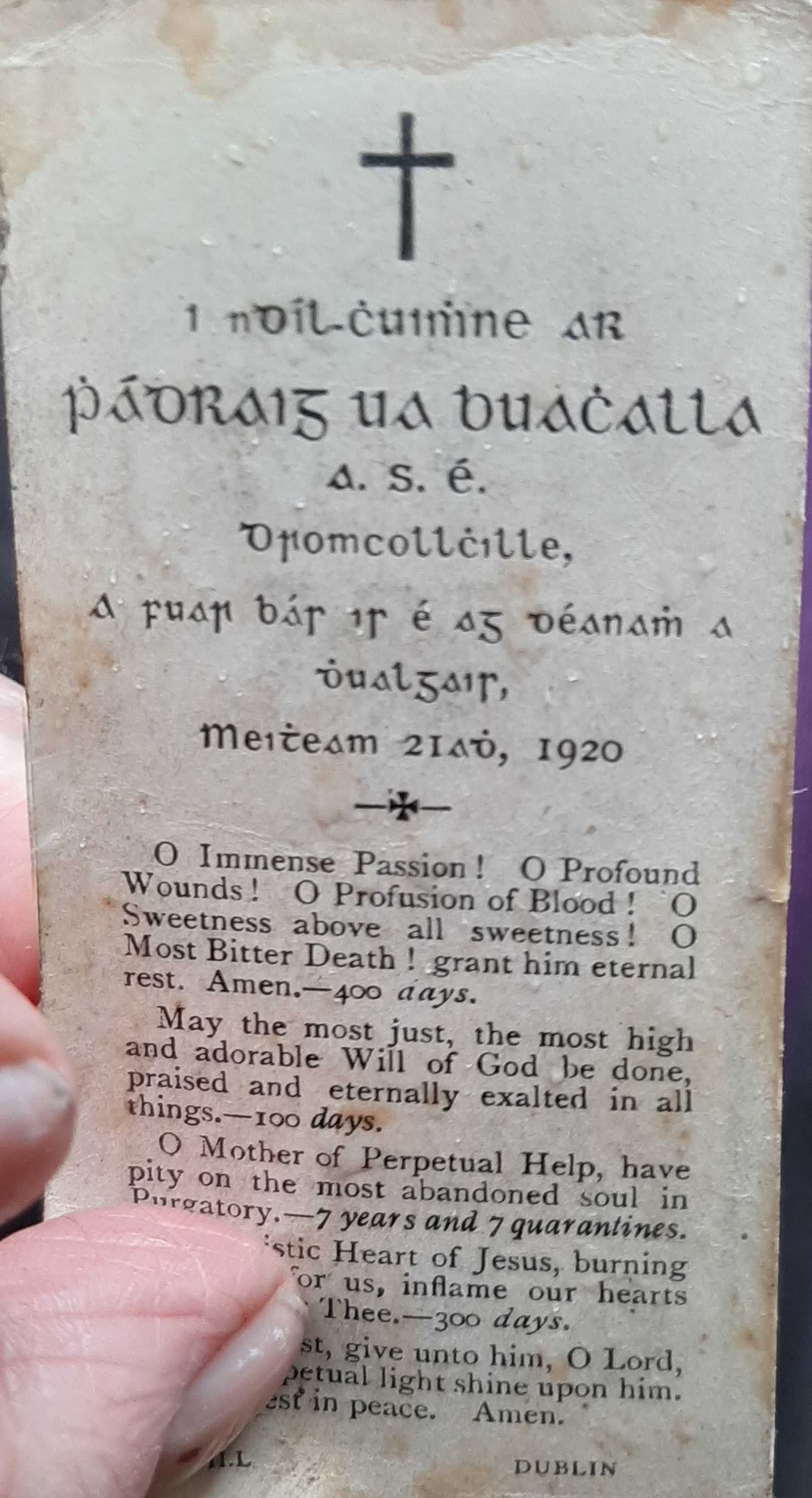
Paddy Buckley’s mortuary card on which he is named in Irish as Pádraig O’Buachalla.
Following an inquest for Patrick Buckley in which a local jury brought in a verdict “that he was a person unknown and had met his death in the discharge of his duty”, his remains were handed over to the Sinn Fein representatives, he had no kin in the locality. The funeral took place the next day from Dromcollogher Church to the local cemetery and was the largest ever seen in the locality.

A view of the fine terrace of homes in Dromcollogher, named in honour of Patrick Buckley.
A view of the fine terrace of homes in Dromcollogher, named in honour of Patrick Buckley. It is fitting that the first development of modern housing to be built in Dromcollogher by the state that Paddy Buckley gave his life to create, was named in his honour. Buckley Terrace is an impressive development of twelve two-storey houses on the Tullylease Road, in Dromcollogher. The location for the new houses was acquired from a Mrs Lenihan who owned much of the land in that part of Carraward Wast at the time. She may have originally come from the Tournafulla/Mountcollins area and a son, Donal Lenihan is interred in the local cemetary. Built in about 1938 as three blocks of four terraced houses, on elevated sites, stepped up along the rising road from the town, these homes used the most modern construction methods of the time. Having electricity, running water, and indoor sanitation from the start, these very impressive two-storey three-bedroom dwellings were the most desirable residences in the locality.
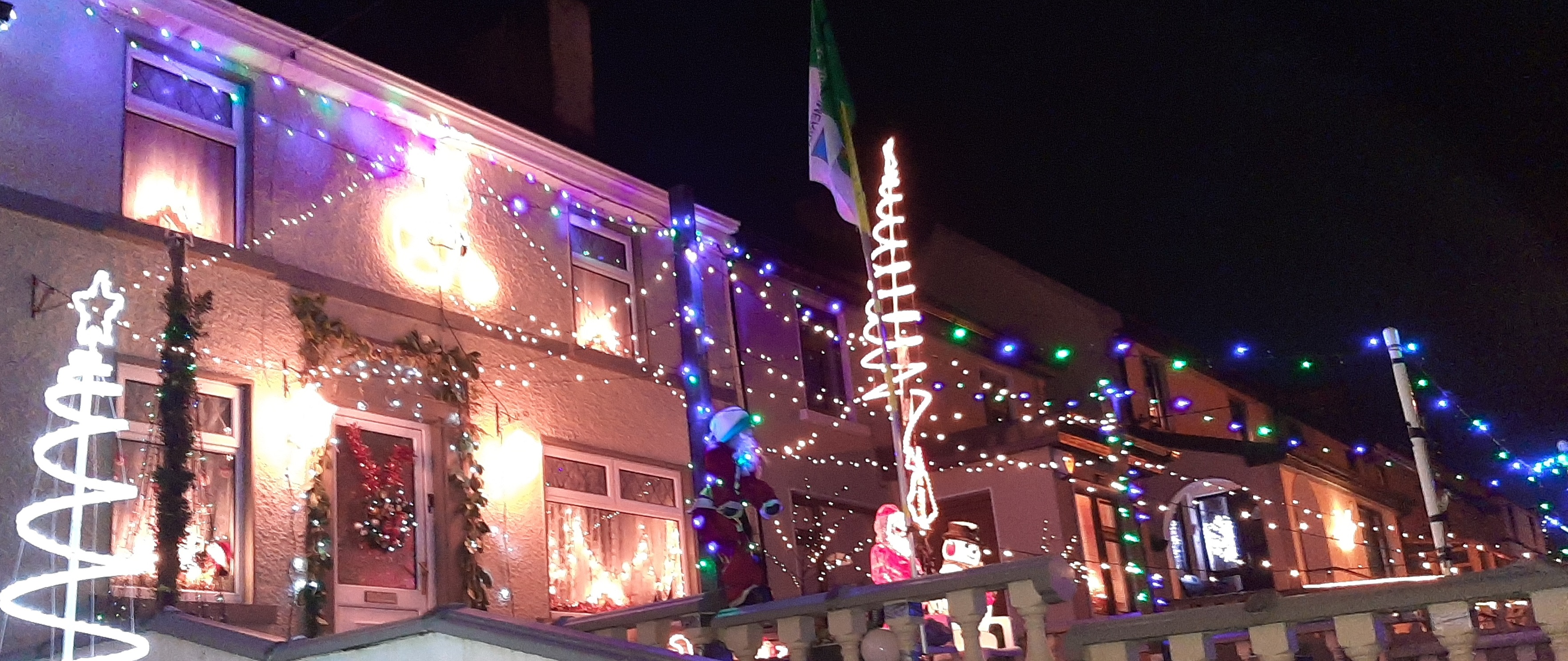
Buckley Terrace has been home for many generations of local families now. A strong and vibrant community there celebrate major events in the calendar and Christmas every year features some fantastic displays.
The families who were lucky to have been allocated homes on Buckley Terrace when originally built were as follows:
1 – John Noonan. John was a harness-maker. His son Eugene, a hurler of note, ran a public house in Church Street, as did Eugene's wife May and their son Gene afterwards.
2 – Paddy Murphy. Paddy worked with the local council in operating and maintaining the sewerage works. He is not the Paddy Murphy who later came to live in No. 4.
3 - Dan and Margaret Fitzgerald. With grandson Christy still occupying No. 3, this is the only house of the twelve that has members of the original family still actually living here.
4 – The Daly family. This family moved to England and the house was later the home of Paddy and Bridget Murphy. Bridget is currently the senior resident of Buckley Terrace.
5 – Tom and Julia Feaheny. The Feaheny’s later moved down to Woodfield, across from the church where they served as sacristans. Afterwards, the baker Tommy O’Neill and his wife Alice set up home in No. 5 and it is still in the O’Neill family today.
6 – Farrell family. There are many connections of the Farrell family still in the locality. The current owner of this home is Mick Farrell, who lives in U.S.A., but visits home every year, staying in the family homestead at No. 6.
7 – Dinny and Cassie O’Gorman. Dinny worked in the local creamery and Cassie was a midwife. They later built a new house for themselves on a site, directly across the road from Buckley Terrace.
8 – O’Connor family. Paddy O’Connor is thought to have worked at the nearby Sheehy house and farm.
9 – Cronin family
10 – Jim O’Donnell. Jim was a tailor and ran his tailoring business from his home on Buckley Terrace.
11 – Paddy and Peggy Horan. The Horan’s later moved to a house, nearer the town, on the same road, that had been owned by a family member.
12 – Maurice Hartnett. This Hartnett family is not the same family as Jimmy Hartnett who currently lives on Buckley Terrace. A son, Charlie from this house married an Alice O’Neill from No. 5 and they moved to Manchester.
Acknowledgements:
- O'Neill family, Buckley Terrace
- Danny O'Callaghan, Memoirs
- Military Archives
- West Limerick Brigade, 3rd Batt. Record of Operations.